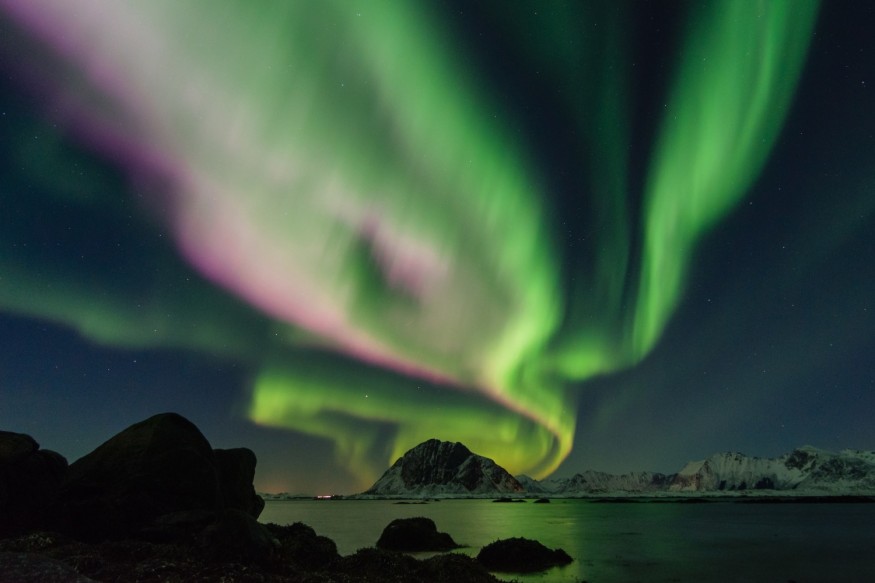STEVE, the atmospheric light display, could be considerably stranger than observers first suspected. Skywatchers are thrilled that the scientific explanation for the peculiar celestial phenomenon, which resembles an aurora in appearance and behavior but differs significantly, is open for discussion.

Studying STEVE
Strong Thermal Emission Velocity Enhancement, or STEVE for short, is a sky glow that can be seen south of the northern lights. The primary characteristic of STEVE is a mauve band of light created by a stream of plasma traveling through the atmosphere in a westward direction. This phenomenon is distinct from that which causes auroras. But STEVE's purple arc frequently has a green "picket fence" surrounding it. Scientists believed that at least this portion of STEVE might be an aurora since the fence resembles the glistening green curtains observed in the aurora borealis.
Studies on the hue of the picket fence have recently raised questions about its genesis. Auroras are created when electrons from the magnetosphere, or magnetic bubble that surrounds Earth, cascade into the atmosphere. These electrons cause the oxygen and nitrogen in the air to glow in different colors. Although STEVE's green picket fence likewise emits brilliant oxygen, the lack of nitrogen emission suggests that the fence is not an aurora.
AlsoRead : Recent Solar Storm Will Result in Glowing Northern Lights Over Canada and Northern Parts of US
Peculiar Light Show

Researchers and citizen scientists have discovered small green streaks that protrude like feet from the bottom of some of STEVE's vertical stripes to be an even more peculiar feature of the picket fence. Researchers publish their findings in the December AGU Advances and conclude that the structure of these horizontal streaks cannot be produced by the electron showers that cause auroras.
Auroral photographers have been observing the STEVE phenomena for years. Evidence points to sightings of it perhaps being documented as early as 1705. There are certain Carl Størmer observations that have notations that resemble the phenomena.
Joshua Semeter, an engineer at Boston University, says, "It's pretty odd, and nobody knows what's going on right now." But the current findings imply that some STEVE-specific mechanism is responsible for these horizontal streaks and maybe the similarly colored fence.
Semeter and colleagues investigated high-resolution pictures of STEVE captured by citizen scientists for horizontal streaks below picket fences. According to the study, the streaks in these photographs were caused by motion blur as spherical blobs of luminous gas traveled through the atmosphere, not true lines extending over the sky.
Extensive Study
According to Toshi Nishimura, a space physicist at Boston University, while these discoveries might hint that the fence might result from STEVE-specific particle interactions, it's challenging to be sure based just on images seen from the ground.
He added that more satellite studies might establish if electrons from the magnetosphere are flooding the atmosphere in the vicinity of a STEVE picket fence. The concept that the barrier is distinct from typical auroras will be strengthened if satellites fail to observe such electron showers.
Related Article : Expert Warns 'Situation Worse than Covid' if Government Ignores Solar Flare Defense
For more cosmic news, don't forget to follow Nature World News!
© 2025 NatureWorldNews.com All rights reserved. Do not reproduce without permission.





